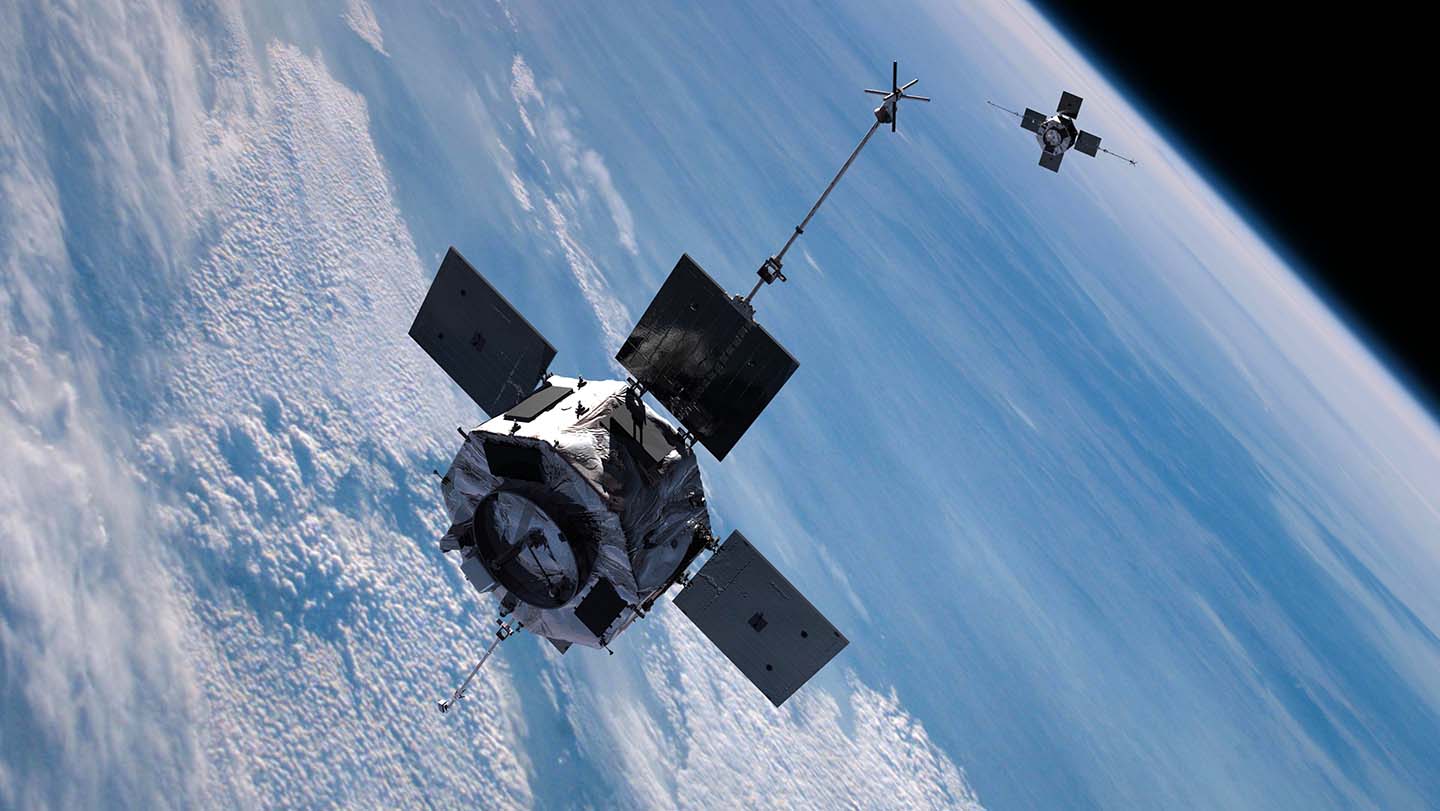Press Release
APL Proposal for Next-Generation Solar Array Technology Selected by NASA
Thu, 03/24/2016 - 13:56
NASA has selected four proposals, including one led by the Johns Hopkins University Applied Physics Laboratory, to develop new solar array technologies. These improved arrays will aid spacecraft in exploring destinations well beyond low-Earth orbit and as far away as Mars and Jupiter.
NASA’s Game Changing Development (GCD) program sought ideas for a new generation of solar arrays that can operate in high-radiation and low-temperature environments, a critical requirement for future deep space missions. These new arrays will improve mission performance and increase solar array life, and ultimately may allow solar-powered spacecraft to explore deeper into space than ever before.
The APL proposal is called Transformational Solar Array for Extreme Environments, and is led by principal investigator Edward Gaddy. Additional partners on the proposal are SolAero Technologies of Albuquerque, New Mexico; Deployable Space Systems (DSS) of Santa Barbara, California; and RA Stall Consulting of Hillsborough, New Jersey. “We’re very excited to continue work for NASA on this concept to improve and enhance solar array technology, and proud to contribute research toward this important goal for NASA and the nation,” said APL’s Gaddy.
The proposal combines two existing, high-performing products: the DSS Roll Out Solar Array with Flexible Array Concentrator Technology (ROSA-FACT) and SolAero’s Inverted Metamorphic (IMM) solar cells. It also introduces new technology to further increase what is already impressive power density and cell efficiency, and modifies these technologies for improved performance in extreme environments.
“The backbones of the project are the ROSA-FACT array and the IMM cells,” said Gaddy. “Building on the excellent performance of those components, we’re implementing dramatic improvements in mechanical performance, efficiency and production costs.”
Gaddy added: “We are particularly pleased to work on this technology to meet NASA’s high-power-per-area requirement, which will result in substantially lower costs for NASA missions. The higher watt per kilogram arrays will allow for more payload in any spacecraft, therefore lowering the costs incurred in the fabrication, launch and operation of that spacecraft — resulting in significant savings.”
“These awards will greatly enhance our ability to further develop and enhance LILT (low-intensity low temperature) performance by employing new solar cell designs,” said Lanetra Tate, the GCD program executive in NASA’s Space Technology Mission Directorate. “The ultimate goal of increasing end of life performance and enhanced space power applications will greatly impact how we execute extended missions, especially to the outer planets.”
The three other proposals selected for contract negotiations are:
- Micro-Concentrator Solar Array Technology for Extreme Environments — The Boeing Company of Huntington Beach, California
- Solar Array for Low-intensity Low Temperature and High-Radiation Environments — NASA’s Jet Propulsion Laboratory in Pasadena, California
- Concentrator Solar Power Systems for Low-intensity Low Temperature and High Radiation Game Changing Technology Development — ATK Space Systems of Goleta, California
Proposals were received from NASA centers, laboratories, research groups and industry. Initial contract awards are as much as $400,000, providing awardees with funding for nine months of system design, component testing and analysis. NASA anticipates a second phase, and may select up to two of these technologies to receive up to $1.25 million for hardware development and testing. In the third and final phase of the project, one awardee may be asked to continue the development and deliver scalable system hardware. The full press release can be viewed here. NASA’s Langley Research Center in Hampton, Virginia, manages the GCD program for the agency’s Space Technology Mission Directorate in Washington.
